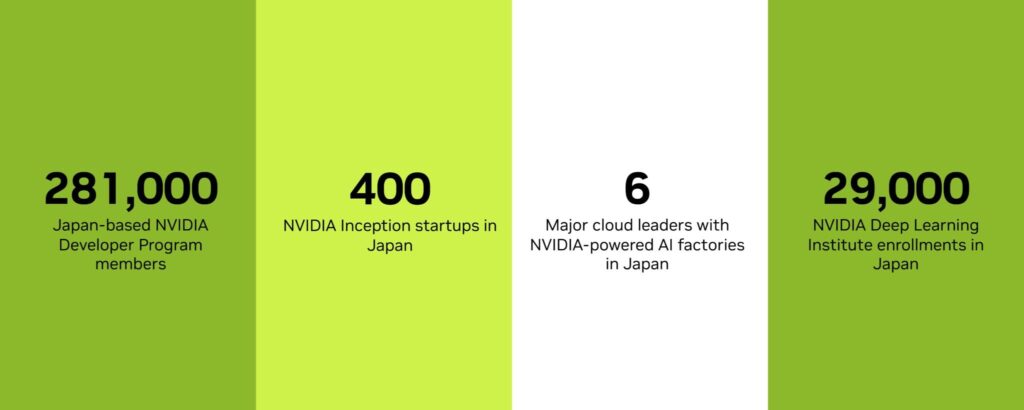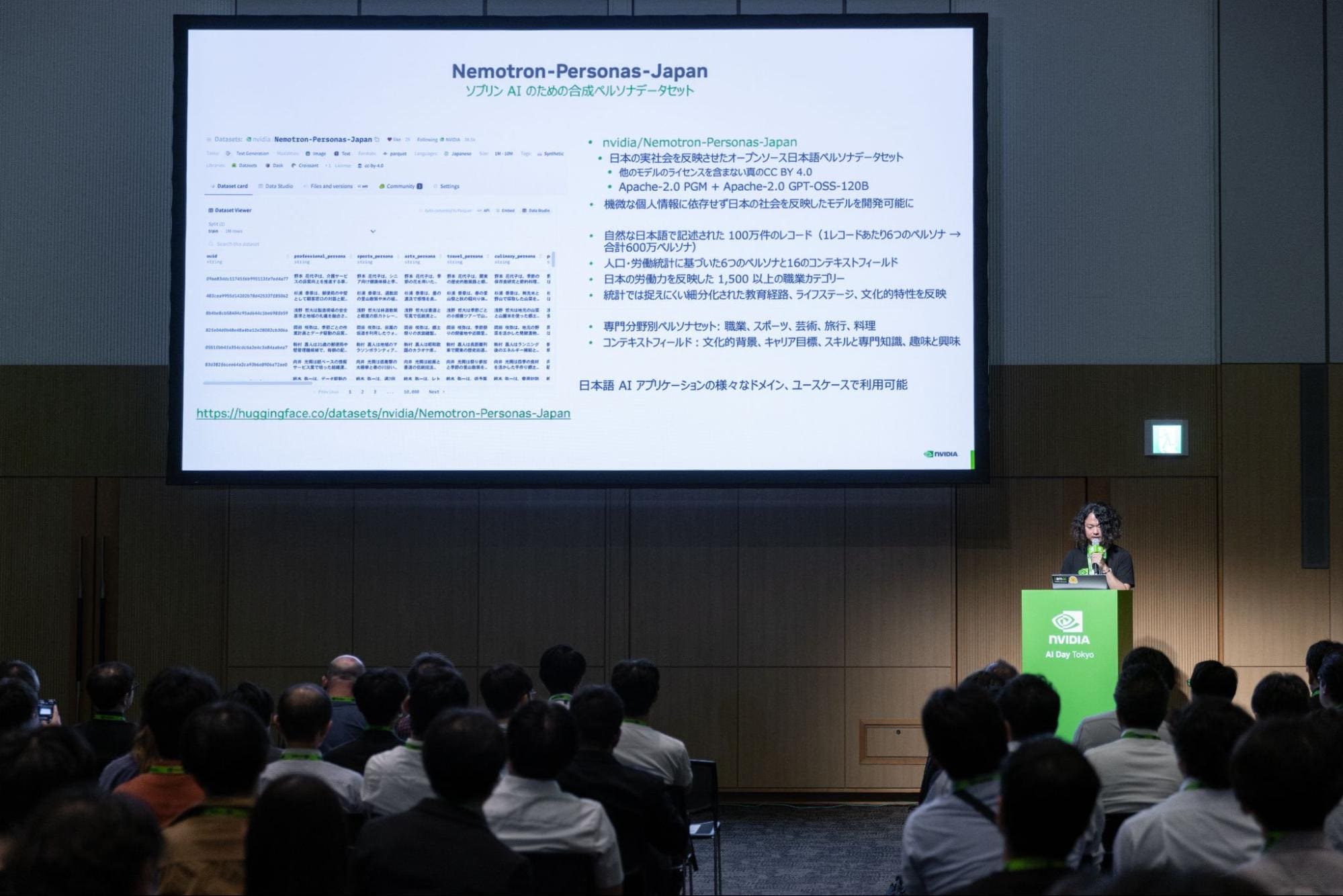The Japanese AI ecosystem showcases industrial muscle and sovereign ambition: over 900 attendees, AI factories operated by companies like SoftBank, GMO Internet, and KDDI, and a forward-looking forecast — Japan will need 320 times more computing capacity than in 2020 by the end of the decade.
Tokyo was this week’s reliable indicator of Japan’s direction in the global race for artificial intelligence. With a rich tradition in engineering and mechatronics, the country has made AI sovereignty a national priority. At NVIDIA AI Day Tokyo, which brought together more than 900 attendees— industry executives, developers, and startups — the agenda went beyond demos: it outlined a roadmap for ensuring that large language models (LLMs) and AI agents are not just imported promises but embedded abilities that rely on local computing, proprietary data, and an expanding community.
The headline came from Kuniyoshi Suzuki, an executive at SoftBank Corp.: “Japan will see a 320× increase in demand for AI computing power by 2030 compared to 2020.” The solution is clear: large-scale domestic computing infrastructure and language models trained locally in Japan — with transparency and security guarantees — to boost adoption across manufacturing, finance, and healthcare sectors. Key players in this effort are national operators and cloud providers. In Tokyo, SoftBank, GMO Internet, and KDDI showcased progress on their AI factories and initiatives to help developers and companies build models and services on NVIDIA-accelerated platforms.
This ambition aligns with government strategies: Japan has placed AI at the core of its industrial policy, launching GENIAC (Generative AI Accelerator Challenge), an initiative by METI to provide compute resources, foster collaboration, and support foundational model creation, including LLMs tailored to the Japanese language and specific sectors. The plan aims to lower entry barriers and speed up pilot projects for companies that lack the scale to access extensive computing resources on their own.
A thriving ecosystem: startups, datasets, and industry agents
The event featured several significant announcements shedding light on why Japan is talking about AI sovereignty beyond slogans. Noteworthy examples include:
- Stockmark unveiled a Japanese LLM with 100 billion parameters deployed as a NVIDIA NIM microservice, delivering inference speeds 2.5× faster. This isn’t an isolated claim: the NVIDIA NIM suite itself is promoted for enhancing production performance and simplifying model serving — critical when costs per token and latency are key.
- FastLabel announced FastLabel Data Curation, a data curation solution targeting autonomous driving and ADAS, emphasizing dataset quality as a differentiator for robust systems.
- Hakuhodo Technologies, the tech arm of Japan’s leading agency, will utilize NVIDIA AI Blueprints and NeMo Agent Toolkit to develop AI agents that autonomously produce advertisements, anticipating a shift toward generative workflows in advertising with enhanced control and traceability.
- Shimizu Corporation, a century-old construction leader, announced exploration of AI Blueprints for video search and summarization to monitor progress and risks on construction projects. The aim: turning audiovisual data into actionable indicators for safety, quality, and planning.
The database — and its legitimacy — form another crucial aspect of AI sovereignty. In Tokyo, Nemotron-Personas-Japan was highlighted as the first open synthetic dataset with demographic, geographic, and cultural distributions aligned with Japanese reality. Its goal: to train models that reflect society without relying on sensitive personal data, ensuring compliance and safeguarding privacy. This approach allows companies and institutions to work with believable profiles that reduce biases, protect privacy, and enhance coverage of Japan’s sociocultural landscape.

Beyond the software and data layers, an industrial vector is vital. Japan is advancing alliances and deployments that anchor compute capacity within the country. It’s no coincidence that SoftBank — which has announced projects involving NVIDIA Blackwell/Grace Blackwell supercomputing — positions itself as a catalyst for this leap. By 2030, the 320× demand Suzuki anticipates will require not only chips but efficient data centers, low-latency optical networks, stable energy supply, and efficiency programs to minimize carbon footprint.
Education, healthcare, and robotics: AI as horizontal infrastructure
NVIDIA AI Day Tokyo wasn’t just about keynotes. It featured a “Japan Healthcare Day” with technical sessions on MONAI (an open-source framework for medical imaging), NVIDIA Holoscan (edge computing platform for medical devices), and NVIDIA Isaac for Healthcare. These show that applied AI is moving from labs into devices, operating rooms, and hospital workflows. The NVIDIA Deep Learning Institute (DLI) also ran workshops on agents with RAG (retrieval-augmented generation) and an introduction to NVIDIA Cosmos, a platform for world models in physical AI.
Simultaneously, the physical AI track delved into technologies linking simulation, perception, and action in the real world: NVIDIA Omniverse for digital twins, Isaac GR00T — a milestone in humanoid robotics — and Cosmos for creating environments and dynamics agents can understand, reason about, and manipulate. The next logical step: digital workers capable of planning, coordinating, and executing complex tasks alongside physical systems (cameras, robotic arms, vehicles). Japan’s culture of operational precision makes it fertile ground for this convergence.
Community and momentum: behind-the-scenes numbers of the ecosystem
Behind the demos and announcements, there’s a critical mass. Japan boasts 281,000 members in the NVIDIA Developer Program, 400 startups in NVIDIA Inception, six major cloud leaders with AI factories built on NVIDIA, and 29,000 enrollments in the NVIDIA Deep Learning Institute. These are indicators of a network effect: more talent and companies lead to more models, tools, and use cases, creating a reinforcing cycle.
Industrial policy: public investment and shorter supply chains
The Japanese government has committed to a large-scale investment through 2030 in semiconductors and AI, focusing on building local capacity and public-private collaboration via programs like GENIAC. The logic is straightforward: without domestic capacity to train and deploy large-scale models, AI sovereignty is illusory. The policy also confronts global supply bottlenecks in advanced chips, HBM memory, and high-performance packages. This has prompted moves to bring manufacturing and packaging closer to home and to reduce dependencies in critical segments of the chain.
It’s not just about spending but about streamlining demand — public and private — so that local clouds and operators can scale their AI factories efficiently, with security and energy resilience. Meanwhile, the training of professionals (from prompt engineers to MLOps and security specialists) accelerates to address a global talent gap.
What’s next
The NVIDIA AI Days circuit continues with Sydney (October 15–16) as upcoming, but all eyes remain on Asia: Japan has turned its robotics tradition and industrial discipline into a strategic pillar for AI, aiming for advanced agents and physical systems working in harmony. Along the way, representative data (Nemotron-Personas-Japan), local infrastructure (AI factories), and state programs (GENIAC) are shaping a path many countries are watching closely.
Frequently Asked Questions (addressing key reader doubts)
What does it mean that Japan will need 320× more AI compute power by 2030? How does that translate practically for companies and governments?
The 320× increase compared to 2020 implies a need to scale up data centers, networks, and storage specifically optimized for AI. For companies and governments, this means more availability of GPUs and services within Japan, lower latencies, local compliance, and the ability to train and fine-tune models locally without relying exclusively on foreign resources. This growth will be driven by AI factories operated by national players such as SoftBank, GMO Internet, and KDDI.
What is GENIAC, and why is it relevant to Japan’s “AI sovereignty”?
GENIAC is a METI initiative that provides access to computing resources for developing generative models, promotes pilot projects, and fosters collaboration among industry, academia, and tech providers. It lowers barriers for SMEs and large firms that can’t afford large-scale training and accelerates ecosystem maturation through domestic resources and governance.
What does Nemotron-Personas-Japan bring to industry and regulation?
It’s the first open synthetic dataset aligned with Japan’s demographic and cultural distributions. It enables training and evaluation of systems that reflect local realities without using sensitive personal data, simplifying compliance and reducing privacy risks. For sectors like banking, insurance, government, and healthcare, it facilitates prototypes and products with mitigated biases and improved explainability.
Which companies and sectors are leading concrete use cases post-Japan AI Day?
Highlights include Stockmark (Japanese LLM with 100 billion parameters as a NIM microservice, with 2.5× inference speed), FastLabel (data curation for ADAS), Hakuhodo Technologies (autonomous advertising agents), and Shimizu Corporation (video search and summarization for construction). Additionally, the AI factories of SoftBank, GMO Internet, and KDDI strengthen local infrastructure to support deploying these use cases at scale.
via: (NVIDIA Blog)

